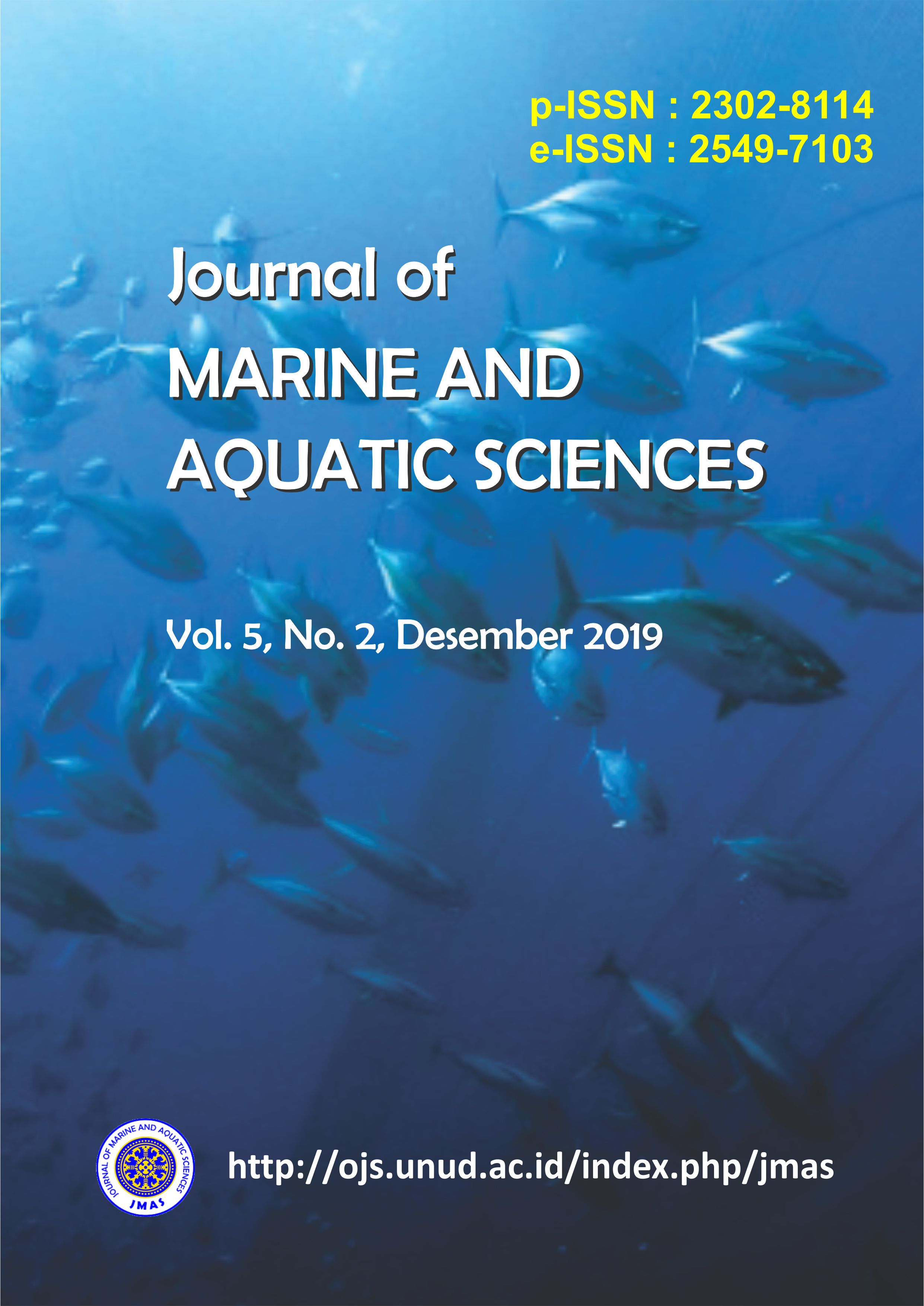Distribusi Spasial Kerapatan Mangrove Menggunakan Citra Sentinel-2A Di TAHURA Ngurah Rai Bali
Abstract
The mangrove forest of TAHURA Ngurah Rai is one of the mangrove ecosystems in Bali that suffered damages and density changes due to natural factors and human activities. Remote sensing is one of the technology that can be used to estimate the density of mangrove canopy in TAHURA Ngurah Rai. The purpose of this study was to find the best vegetation index for estimating mangrove canopy density out and map it spatially using Sentinel-2A image. The method of this research is using vegetation index NDVI, EVI and mRE-SR to estimate mangrove canopy density. Field data was collected using Stratified Random and Proportional Sampling method by taking photo of the density of canopy using camera with Fish Eye lens on 34 plot. The results of this study show the satistic test of the linear model of the vegetation index with the mangrove canopy density value on the NDVI index (r = 0.8165, R2 = 0.6667, RMSE = ± 8.1508), EVI (r = 0.8597, R2 = 0.7390, RMSE = ± 7.8117), and mRE-SR (r = 0.9277, R2 = 0.8607, RMSE = ± 4.9571). The conclusion of this research is mRE-SR vegetation index able to map mangrove canopy density better than NDVI and EVI vegetation index with 86.07% accuracy. The mangrove spatial distribution generated from the mRE-SR model is 1002.22 Ha with 3.24 Ha categorized as very high density, 94.82 Ha categorized as high density, 333 Ha categorized as medium density, 402.38 Ha categorized as low density, and categorized as very low density is up to 168.76 Ha.
Downloads

This work is licensed under a Creative Commons Attribution 3.0 International License.
Copyright 2012 - 2023 Journal of Marine and Aquatic Sciences (JMAS)
Published by Fakultas Kelautan dan Perikanan Universitas Udayana, Denpasar, Bali, Indonesia
JMAS (p-ISSN 2302-8114; e-ISSN 2549-7103)


